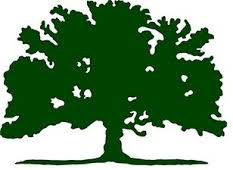Cave Hill Arboretum Accreditation Project
A robust horticultural legacy began over 170 years ago on what was then the outskirts of Louisville. The vision of the first cemetery superintendent and the successive leaders who followed has created a beautiful cemetery, and the city’s only accredited arboretum. We are embarking upon a major project to increase the level of arboretum accreditation from Level II to Level III status, joining a select international group of Level III accredited arboreta. Our goal is to achieve this milestone by the end of 2021, and we need your help!
Cave Hill’s Arboretum Accreditation Project is designed to be accomplished in three phases.
Special thanks to the following supporters of the Cave Hill Arboretum Project
Phase 1
Phase 1
Cave Hill is partnering with The Davey Tree Expert Company, a leader in the arboricultural industry for Phase One. A survey of all 296-acres of the cemetery will begin in July 2020 to create a full inventory of our tree collection. It is estimated that over 6,000 trees will be catalogued in this process.
Phase 2
Phase 2
Once the tree inventory is finalized, we can then interpret the results. Our teams will be able to accurately gauge the health and vitality of our canopy, creating a formal management plan and policies that will enhance the value of the tree collection to the community.
Phase 3
Phase 3
After becoming fully accredited as a Level III accredited ArbNet Arboretum, our work truly begins. Internally, our teams will have full access to other arboreta around the world to learn best practices and be ahead of issues being faced elsewhere. Externally, you will see enhanced programming, interpretive signage, and an accessible tree database amongst many other things. Collaboration with universities and peer organizations will allow for tremendous opportunities to solidify an environmental stewardship model that addresses long-term landscape management needs and biodiversity within Cave Hill Cemetery, all of which impacts the greater community.
What does this mean to me?
What does this mean to me?
From cleaner air to a reduction in the urban heat island effect, our community will see tangible benefits from the Cave Hill Arboretum Accreditation Project. As a living laboratory for observation by our university partners, the Cemetery is a model landscape for implementation in the urban setting, where it is too commonly seen that physical and mental health is negatively impacted by inaccessible green space.
Perhaps, most importantly, is you. Like many Louisvillians, your first memory of Cave Hill Cemetery probably involves the ducks or trees? Did you feed the ducks at the lake as a child? Did you conduct your first leaf collection at Cave Hill Cemetery? Just imagine if 170 + years of successive leaders did not invest in the creation of a horticultural legacy worth preserving. Now is your time to join us as stewards of an environmental project that will impact many.
What can you do today to impact the outcome of tomorrow?

